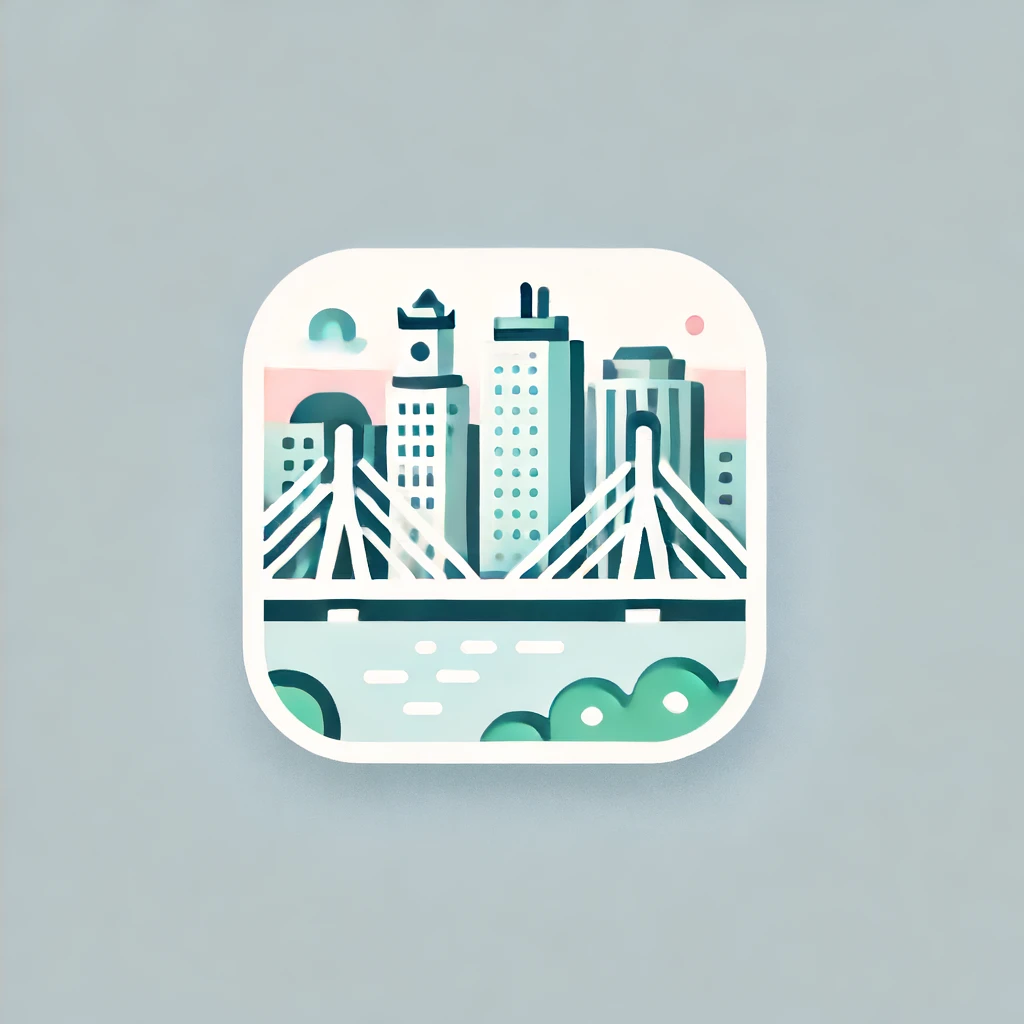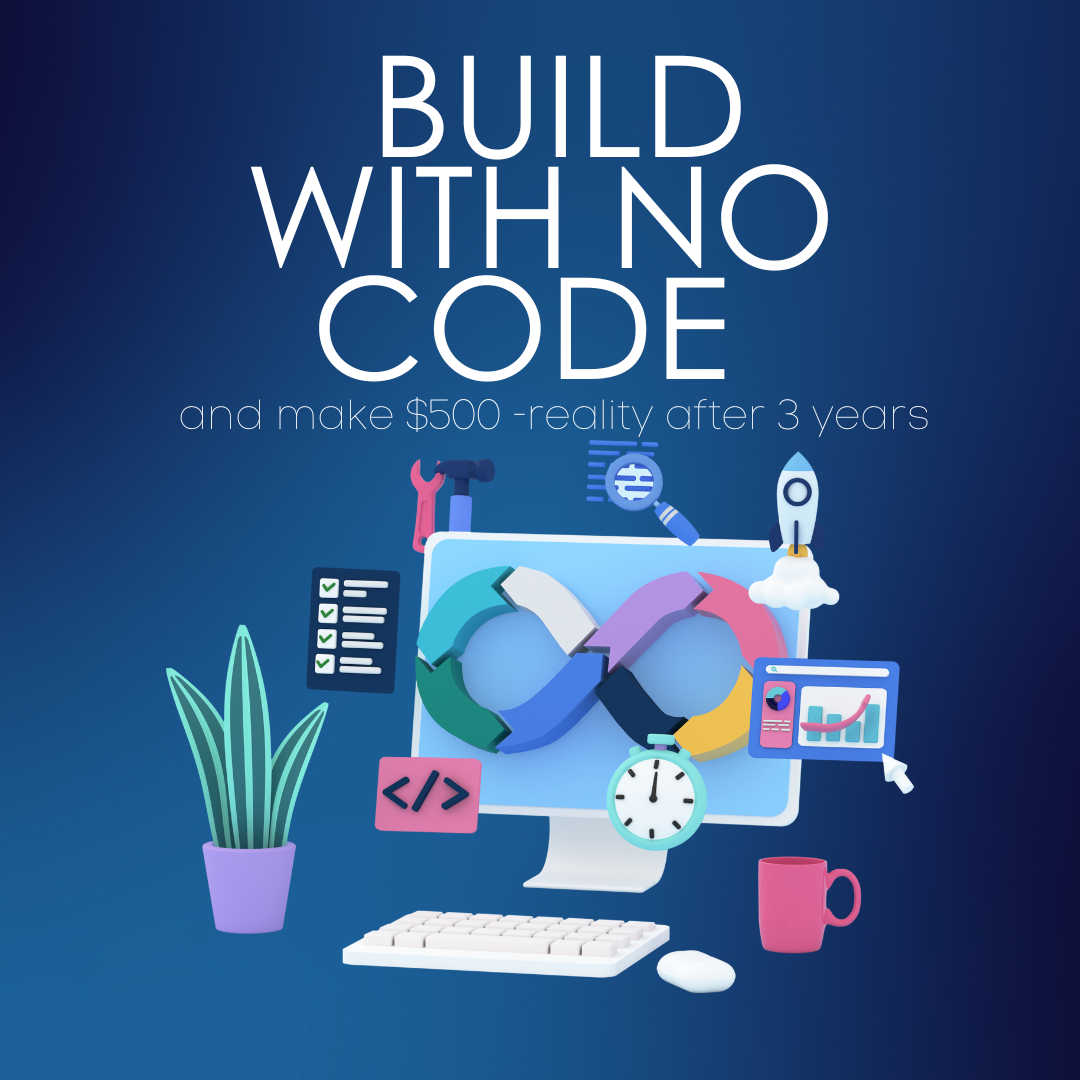
Building a software application or a Software as a Service (SaaS) product without any coding skills might seem daunting, but it’s entirely possible with the advent of no-code and low-code platforms. These tools have democratized software development, allowing non-technical individuals to create powerful applications. In this comprehensive guide, we’ll explore the steps to build your application or SaaS, introduce various no-code/low-code platforms, and provide helpful resources, including YouTube tutorials and a detailed spreadsheet of the latest applications.
If You Want to SKIP and SEE how HE MADE $500 a Month After 3 Years… https://youtu.be/jmPE5c5R7eo?si=t0haNRSN5Y34c7uy
He makes $500 a month currently with these expenses:
- $9.00 – OpenAI: https://openai.com/
- $5.00 – PineconeAI: https://www.pinecone.io/
- $20.00 -Vercell (YATB) https://vercel.com/geist/tabs (watch YOUTUBE because many are not using this anymore)
- $80.00 – Planetscale : https://planetscale.com/pricing
If you were to calculate the zillion hours of knowledge it took him to learn what he did and use what he has and had an accurate way to put that in a quantitative value – what would that be?
ROI is calculated by subtracting the initial cost of the investment from its final value, then dividing this new number by the cost of the investment, and finally, multiplying it by 100.
Time/Knowledge – ($114 – $500) / $114) * 100 equals 29% without the T/K
1. Understanding No-Code and Low-Code Platforms
What Are No-Code Platforms?
No-code platforms are tools that allow users to build software applications without writing any code. These platforms provide a visual interface where you can drag and drop elements to create your application. They are designed for individuals with little to no technical background.
What Are Low-Code Platforms?
Low-code platforms are similar to no-code platforms but may require minimal coding. These platforms are intended for users who have some technical knowledge but prefer to streamline the development process by avoiding extensive coding.
2. Benefits of No-Code/Low-Code Development
- Speed: Rapidly prototype and deploy applications.
- Cost-Effective: Reduce development costs by eliminating the need for a large development team.
- Accessibility: Empower non-technical users to create and manage applications.
- Flexibility: Easily modify and update applications as needed.
3. Steps to Build Your Application or SaaS
Step 1: Define Your Idea
Before you start building, you need a clear understanding of your application’s purpose, target audience, and key features. Create a detailed project plan outlining your goals and requirements.
Step 2: Choose the Right No-Code/Low-Code Platform
Selecting the appropriate platform is crucial. Consider factors such as ease of use, features, scalability, and cost. Here are some popular options:
- Bubble: A powerful no-code platform for building web applications.
- Adalo: Ideal for creating mobile apps with a user-friendly interface.
- Airtable: Combines a database with a user interface builder.
- Webflow: Great for building responsive websites without coding.
- AppGyver: Offers extensive features for building complex applications.
Step 3: Design Your Application
Most no-code/low-code platforms offer a variety of templates and design tools. Use these to create a visually appealing and functional interface for your application.
Step 4: Implement Features
Drag and drop elements to add features to your application. This may include forms, databases, user authentication, payment gateways, and more. Platforms like Bubble and Adalo offer extensive plugins and integrations.
Step 5: Test Your Application
Thoroughly test your application to ensure it works as expected. Check for usability, performance, and any bugs that need fixing.
Step 6: Launch and Market Your Application
Once you’re satisfied with your application, it’s time to launch it. Publish your app on relevant platforms (e.g., App Store, Google Play, or your website). Implement a marketing strategy to reach your target audience.
Step 7: Maintain and Update Your Application
Regularly update your application based on user feedback and technological advancements. Most no-code/low-code platforms make it easy to make changes and deploy updates.
4. Helpful YouTube Resources
YouTube is a fantastic resource for learning how to use no-code/low-code platforms. Here are some top channels and videos:
Top YouTube Channels
- 1) Nocodedevs
- 2) Pory
- 3) Adalo
- 4) Buildcamp
Recommended Videos
- 1) Bubble.io Tutorial for Beginners
- 2) Adalo Full App Tutorial
- 3) How to Build a Website Without Coding using Webflow
- 4) Airtable Basics: How to Create a Database
- 5)AppGyver: Build a Mobile App Without Coding
5. Spreadsheet of No-Code/Low-Code Platforms
Below is a spreadsheet with a list of popular no-code/low-code platforms, including their names, links, cost per month, links to popular app demos, and their popularity by views.
| Name | Link | Cost per Month | Demo Link | Views |
|---|---|---|---|---|
| Bubble | Bubble | $25+ | Bubble Demo | 500,000+ |
| Adalo | Adalo | $50+ | Adalo Demo | 300,000+ |
| Airtable | Airtable | $12+ | Airtable Demo | 400,000+ |
| Webflow | Webflow | $12+ | Webflow Demo | 450,000+ |
| AppGyver | AppGyver | Free | AppGyver Demo | 200,000+ |
| Pory | Pory | $49+ | Pory Demo | 150,000+ |
| Glide | Glide | $29+ | Glide Demo | 250,000+ |
| Thunkable | Thunkable | $21+ | Thunkable Demo | 300,000+ |
| OutSystems | OutSystems | Custom | OutSystems Demo | 100,000+ |
| Mendix | Mendix | Custom | Mendix Demo | 100,000+ |
6. Additional Resources
Blogs and Articles
- Makerpad: No-Code Resource Hub
- NoCode.Tech: Platform Comparisons and Reviews
- Medium: No-Code Development Articles
Communities
- NoCode Founders: NoCode Founders Community
- Indie Hackers: Indie Hackers Community
- Makerpad: Makerpad Community
Courses
- Udemy: No-Code Development Courses
- Coursera: No-Code and Low-Code Courses
- LinkedIn Learning: No-Code Development Learning Path
Conclusion
Building an application or SaaS product without coding skills is more accessible than ever, thanks to no-code and low-code platforms. By following the steps outlined in this guide, you can turn your ideas into reality quickly and efficiently. Utilize the resources provided, including YouTube tutorials, community forums, and courses, to enhance your knowledge and skills. Remember, the key to success is continuous learning and iteration. Happy building!
Note: To keep this article concise, we have provided a high-level overview. For in-depth tutorials and step-by-step guides, refer to the YouTube videos and other resources mentioned throughout the article. The accompanying spreadsheet with platform details can be accessed here.
Here’s some more info on YOUTUBE’s VIEWERSHIP and what platform in SOCIAL MEDIA is on top: with the prompts and coding I have from GPT:
Subject Top YouTuber \
0 Gaming PewDiePie
1 Tech Reviews Marques Brownlee
2 Beauty & Makeup James Charles
3 Fitness & Health Chloe Ting
4 Travel Vlogs Kara and Nate
YouTuber Link \
0 https://www.youtube.com/user/PewDiePie
1 https://www.youtube.com/user/marquesbrownlee
2 https://www.youtube.com/channel/UCucot-Zp428Ow...
3 https://www.youtube.com/channel/UCCgLoMYIyP0U5...
4 https://www.youtube.com/user/karaandnate
Top Video Link Views
0 https://www.youtube.com/watch?v=6Dh-RL__uN4 110M+
1 https://www.youtube.com/watch?v=ezAlH6FRQDk 25M+
2 https://www.youtube.com/watch?v=9zpjCZli-HE 35M+
3 https://www.youtube.com/watch?v=UItWltVZZmE 80M+
4 https://www.youtube.com/watch?v=rn9AQoI7mYU 10M+
Top 5 YouTube Subjects
| Subject | Top YouTuber | YouTuber Link | Top Video Link |
|---|---|---|---|
| Gaming | PewDiePie | https://www.youtube.com/user/PewDiePie | https://www.youtube.com/watch?v=6Dh-RL__uN4 |
| Tech Reviews | Marques Brownlee | https://www.youtube.com/user/marquesbrownlee | https://www.youtube.com/watch?v=ezAlH6FRQDk |
| Beauty & Makeup | James Charles | https://www.youtube.com/channel/UCucot-Zp428OwkyRm2I7v2Q | https://www.youtube.com/watch?v=9zpjCZli-HE |
Here is the chart outlining the top 5 subjects currently being watched and consumed on YouTube with links to the top YouTubers in their field. The spreadsheet includes the subject, top YouTuber, YouTuber link, top video link, and views.
Top 5 YouTube Subjects
| Subject | Top YouTuber | YouTuber Link | Top Video Link | Views |
|---|---|---|---|---|
| Gaming | PewDiePie | PewDiePie | Watch Video | 110M+ |
| Tech Reviews | Marques Brownlee | Marques Brownlee | Watch Video | 25M+ |
| Beauty & Makeup | James Charles | James Charles | Watch Video | 35M+ |
| Fitness & Health | Chloe Ting | Chloe Ting | Watch Video | 80M+ |
| Travel Vlogs | Kara and Nate | Kara and Nate | Watch Video | 10M+ |
This table provides a quick reference to some of the most popular YouTube subjects and their leading content creators, along with links to their channels and popular videos.

Thx for your post. I’d like to write my opinion that the price of car insurance will vary from one insurance policy to another, mainly because there are so many different facets which give rise to the overall cost. Such as, the brand name of the vehicle will have a huge bearing on the price. A reliable aged family vehicle will have a more affordable premium than the usual flashy expensive car.
Okay.
I love the examples you provided.
This article is a fantastic resource. Your detailed explanations and practical advice are greatly appreciated.